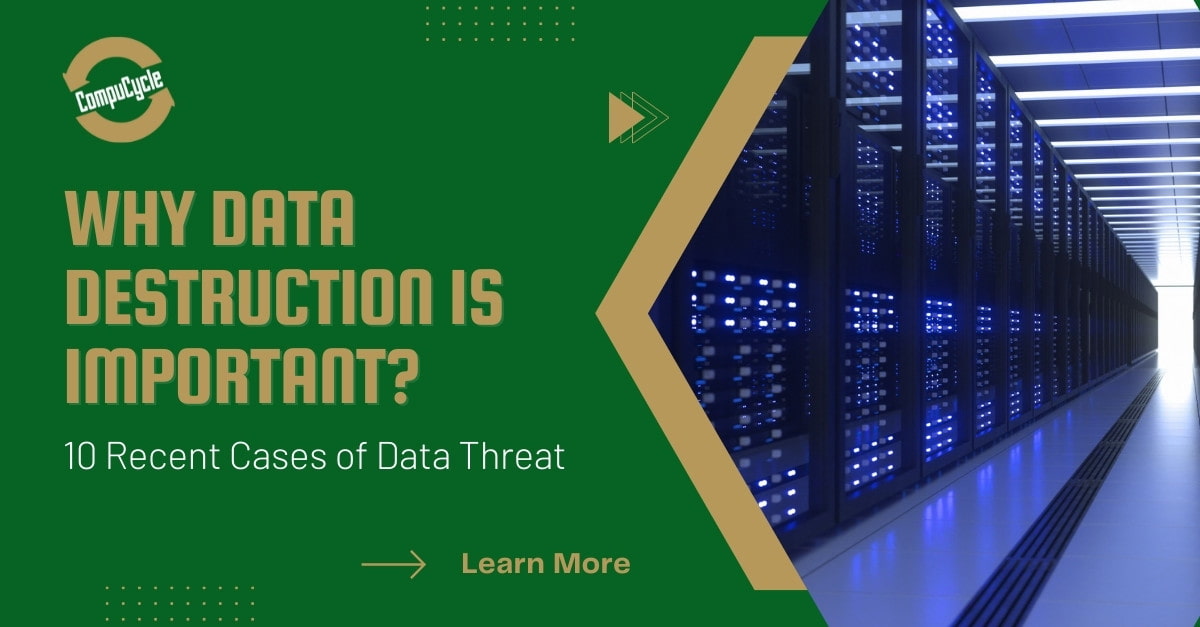Data Destruction Solutions: A Key Element in Your Cyber Security Technique
Data Destruction Solutions: A Key Element in Your Cyber Security Technique
Blog Article
The Relevance of Effective Information Devastation Practices in Shielding Sensitive Information and Ensuring Computer Safety And Security
In an age where information violations are significantly usual, the importance of effective data damage methods can not be overstated. Organizations face considerable dangers when delicate info is improperly disposed of, potentially resulting in unauthorized gain access to and serious monetary consequences. Executing robust data destruction methods not only reduces these risks but also aligns with legal conformity needs, making certain that companies maintain their online reputation and foster customer depend on. The question remains: what particular approaches can be utilized to enhance these techniques, and exactly how can organizations successfully integrate them into their total cybersecurity structure?
Recognizing Data Devastation
Comprehending information destruction is critical in today's digital landscape, where delicate information can quickly be compromised. Reliable data damage involves not simply removing files however ensuring that information is irretrievable through detailed methods. This process is crucial for organizations that manage personal client information, intellectual residential or commercial property, or inner records, as any breach can cause extreme financial and reputational consequences.
Data devastation incorporates different strategies, including shredding physical media, degaussing magnetic storage devices, and utilizing software-based options that overwrite information numerous times. Each approach offers a specific purpose and must align with the sensitivity of the information being taken care of. For instance, physical destruction is frequently chosen for hard disk drives consisting of extremely private data, while software application techniques might be enough for less sensitive information.
Additionally, adhering to industry standards and regulations, such as the General Information Defense Law (GDPR) or the Wellness Insurance Policy Transportability and Liability Act (HIPAA), is critical for conformity and to alleviate legal threats. Organizations has to create a robust data damage plan, train workers on finest practices, and frequently examine their treatments to make sure that all delicate info is gotten rid of safely and effectively.
Threats of Inadequate Practices
Insufficient information devastation techniques reveal companies to significant dangers that can have far-reaching repercussions. When delicate details is not properly dealt with, it remains prone to unapproved access, which can bring about data breaches and identification burglary. Such events not only compromise the safety of people but likewise tarnish the company's credibility, causing a loss of consumer depend on and possible financial repercussions.
Additionally, regulative conformity is progressively strict in several sectors. Failing to abide by information destruction laws can result in large fines and lawsuits against organizations. These penalties can strain monetary resources and divert focus from core business procedures.
Additionally, the abuse of recurring data can cause copyright burglary or company espionage, jeopardizing affordable advantages (data destruction). The effect of poor information devastation expands beyond immediate financial losses; it can additionally cause long-term damage to brand honesty and market position

Organizations must identify that data security is not solely about protecting against breaches; it also encompasses the responsible monitoring of information throughout its lifecycle. Ignoring efficient data devastation methods can have disastrous ramifications, underscoring the necessity for durable steps to alleviate these dangers.
Ideal Practices for Data Damage
Implementing efficient information damage practices is vital for safeguarding sensitive details and preserving compliance with regulative standards. Organizations ought to take on a multi-faceted approach to guarantee that data is irretrievable, therefore preventing unapproved access and potential violations.
First, data should be categorized based upon level of sensitivity, allowing companies to apply appropriate damage techniques customized to the degree of risk. For electronic data, using software-based data-wiping tools that abide by sector standards can efficiently overwrite existing data. Physical devastation techniques, such as shredding or degaussing, are important for gadgets that store sensitive info, guaranteeing complete elimination.
Establishing a clear information retention policy is vital, outlining how much time different kinds of info need to be maintained before devastation. Regular audits of data storage space systems are likewise required to identify out-of-date or unnecessary data needing removal.
In addition, training employees on the value of data devastation and the details protocols to adhere to fosters a society of safety within the company. Ultimately, maintaining documents of data destruction refines gives liability and sustains conformity with internal policies and exterior policies. By adhering to these best methods, companies can considerably alleviate the threats associated with information exposure.
Legal and Compliance Considerations

Failing to follow these guidelines can cause extreme penalties, including significant fines and reputational damage. Organizations should implement a robust information devastation plan that aligns with these lawful frameworks and offers clear guidelines on the correct approaches of information disposal, whether physical shredding or digital wiping.
Moreover, keeping paperwork of information destruction activities is important for demonstrating conformity during audits or assessments. By prioritizing legal and conformity factors to consider, companies can boost their data safety pose and foster depend on with stakeholders and customers, inevitably adding to an extra resource safe information management environment.
Advantages of Effective Data Damage
Efficient information destruction practices prolong beyond mere conformity; they supply significant advantages to organizations that prioritize them. By making sure that delicate information is irretrievably damaged, organizations minimize the danger of information breaches and the potential financial consequences connected with them. This positive method not just safeguards against unauthorized accessibility but additionally enhances the total trustworthiness of the organization in the eyes of stakeholders and clients.
Executing robust information devastation methods, such as physical damage of storage devices or sophisticated data cleaning strategies, adds to the conditioning of an organization's cybersecurity stance. data destruction. It reduces the chance of copyright burglary and secures proprietary details, thus keeping a competitive side on the market

Final Thought
In verdict, effective information devastation methods are crucial for securing sensitive information and boosting overall computer safety and security. By carrying out thorough techniques such as degaussing, shredding, and software application overwriting, organizations can reduce the risks linked with unapproved access and information violations. Adherence to regulatory criteria, including GDPR and HIPAA, additional enhances compliance and secures versus lawful repercussions. Ultimately, a dedication to robust information damage techniques cultivates a society of duty, therefore strengthening a company's cybersecurity pose and keeping customer depend on.
Report this page